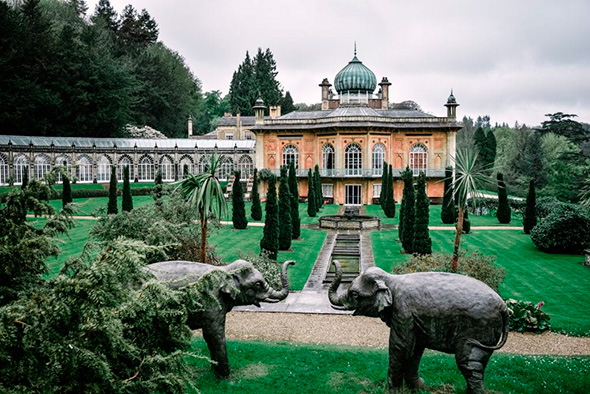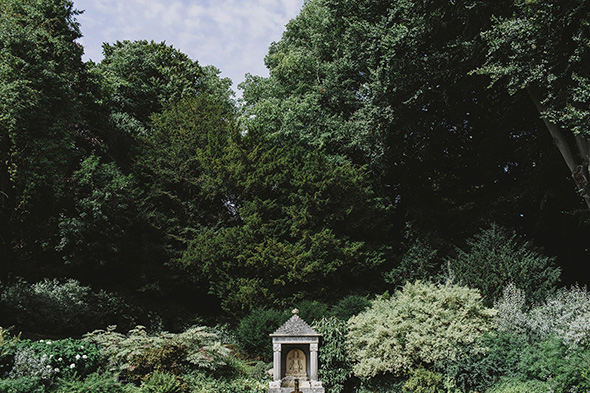

After passing through the stately oak trees that line the long drive of this Gloucestershire garden on the edge of the Cotswolds, you come into view of an aged copper dome, transported directly from India. To the south, a curved conservatory unfolds over a landscape unchanged since the mid-19th century. The garden features a series of spring-fed pools, connected by a gurgling stream that eventually cascades into the island pool at the bottom of the valley before joining the River Evenlode.
The house was the brainchild of Colonel John Cockerell, grandson of the chronicler Samuel Pepys, who returned to England having amassed a fortune with the East India Company. John died in 1798, three years after his return, and the property passed to his younger brother Charles, who had also worked for the company. He commissioned his brother Samuel, an architect, to design and build an Indian house in the Mughal style of Rajasthan, complete with minarets, peacock-tail windows, jali railings, and pavilions.
Once completed, Sezincote dazzled all who visited it. When the Prince Regent visited in 1807, an event commemorated in a painting by Daniell owned by the family, he was so impressed that he changed his plans for the Royal Pavilion in Brighton. Designed by John Nash, it echoed the exotic Indian style he had admired at Sezincote.
The poet John Betjeman, who used to visit it as a student at Oxford, captured the charm of Sezincote in Summoned by Bells:
Along the way, under the first yellow leaves of the oaks... The bridge, the waterfall, the temple pond and there they burst above us, the onion domes.
It also alludes to the exotic “home of the oaks,” because Sezincote (pronounced Seezincote) is derived from Cheisnecote, from chêne, French for oak, and cradle for dwelling.



0 comments